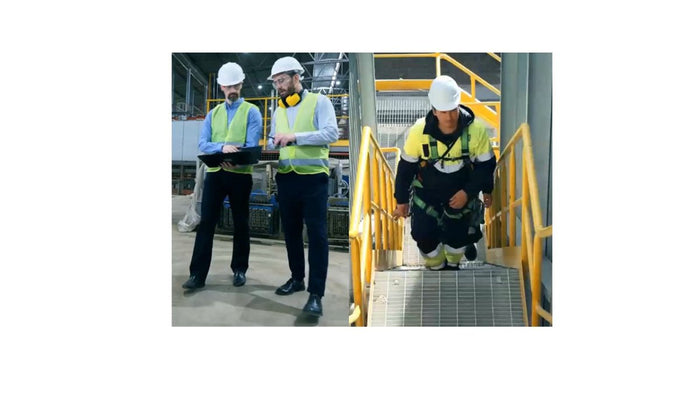BEST KEPT SECRET FOR IMPROVING EMPLOYEE PRODUCTIVITY

Understanding Productivity For The Work Environment
Workers who walk or stand for long periods of time during their workday, without proper foot support and shock absorption, are susceptible to pain and harmful musculoskeletal disorders (MSDs) that can have lasting effects on the body. Just as steel-toe footwear is often required as personal protective equipment (PPE) for workers, insoles are essential for preventing pain and fatigue.
If workers spend hours on their feet, there is an increased risk for inflammation and excess muscle fatigue that could be avoided with proper foot support and insole comfort. Aches and pains in the body associated with foot issues can also impact workers knees and back. Understandably, this can result in reduced employee work productivity, lower morale and increased absenteeism. Thankfully, solutions exist today that can reduce the negative impact of the environment on employees’ feet.
Healthy Feet Start With Smart Corporate Decision Making
In order to address foot and lower extremity issues within their workforce, companies are predominantly choosing between insoles and floor matting. Personal insoles offer numerous advantages over floor mats (Occupational Health & Safety). These benefits include:
- Portability: Insoles can be implemented instantly without training and go wherever the worker goes. This makes them an ideal solution for both stationary and mobile workers who work both indoors and outdoors. Additionally, when a worker walks away from their workstation, the comfort stays with them. This option also protects employees who walk to and from work, ensuring they arrive and leave without strained or sore feet.
- Personalize Comfort: Employees can select the type of insole that best matches their needs, allowing for personalized comfort for workers based on their foot size and arch type.
- Direct Contact with the Body: As insoles are placed inside the footwear, they have 100 percent surface contact with the feet and body, 100 percent of the time, providing a reliable ergonomic solution. Therefore, they’re far more effective than the standard anti-fatigue floor mats at reducing muscle strain, improving balance reactions and increasing blood circulation. This helps to prevent pain and injuries.
- Reduced Risk: Insoles reduce the risks of slips, trips and falls, making the workplace safer and lowering expenses related to workers’ compensation claims. Facilities that utilize matting, must make sure to keep the surfaces clean and well-maintained so that they remain intact and the edges don’t curl up and create tripping hazards.
- Less Maintenance: Insoles are often machine washable, making them extremely easy to keep clean compared to mats that build up dirt over time.
- Easy to Implement: Insole programs are simple to implement, particularly if you have conducted a wear test trial with a key group of employees first.
- Cost Effective: Insoles are more affordable than floor matting. Top end cost for a floor mat is approximately $200 with higher end insoles at approximately ¼ that cost.
Rather than an afterthought, the right insoles should be considered as a necessary complement to any corporate health and wellness program. Implementing a company insole program is an important decision and all aspects should be considered, including employee involvement, to ensure the program meets the needs of all workers, and has a positive impact and acceptance rate.
How To Make Those Workers’ Feet Happy
The rank and file know that proper supportive insoles will help address physical work requirements such as prolonged standing, static postures, over-exertion and repetitive motion. The right insole provides better balance and overall lower body alignment. This in turn reduces aches, pain and injuries on the job. Another added benefit is that once an insole program is instituted, the confidence level for safety leaders will be increased (Corporate Wellness Magazine).
Finding an insole provider that offers numerous customizable and comfortable options allows companies and employees to explore a range of solutions for both plant/ warehouse and office workers. Insoles that provide shock absorption can be used to prevent health and pain issues, while others provide more support to align the foot into the proper neutral position.
A new insole, SelectFlex provides companies with a unique and cost effective way to offer their employees dynamic customization for their arch while, providing maximum comfort. With SelectFlex PowerLift Arch suspension system, the wearer is able to control the support level and dynamic firmness provided to the arch. This unique Arch-Control Insole has earned SelectFlex the honor as Best Foot Protection Product of 2020 by Industrial Safety & Health News (ISHN Awards). Additionally, this superior technology will translate to improved employee foot health, reduced fatigue, higher productivity and lower injury/illness associated costs.
Different work activities, types of footwear and other factors within a corporation can impact the level of safety, comfort and support required. Therefore, it’s important to provide anti-fatigue solutions with multiple customization options. SelectFlex allow users to adjust support easily and quickly when these factors impact comfort, support and balance.











